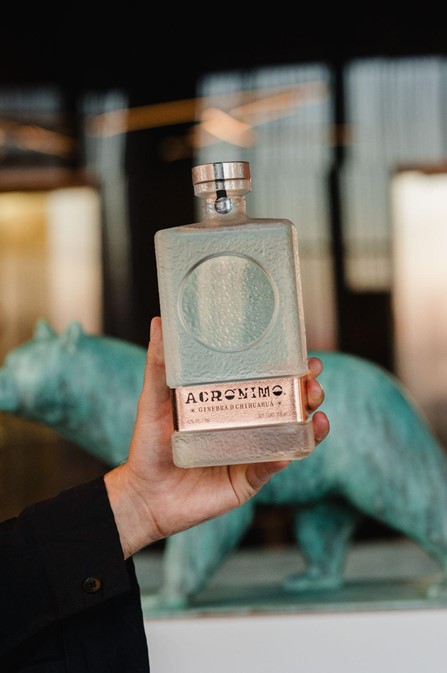What Is Gin? A Complete Beginner’s Guide to This Timeless Spirit

So what is gin? Of course, to put it in simple terms, it is a clear alcoholic spirit flavored with juniper berries.
But one may really not get past just that. From its history-tense encounter of tags with holy medicinal origins, crossing mostly all bars around the globe today with cocktail popularity, and now one does not have to be a virgin to spirits or have only stuck to whiskey or vodka all one’s life; learning about gin brings an entirely new universe of taste, culture, and creativity.
Venturing further into this highly botanical spirit is now worth the time to learn why gin is timeless, modern, and most certainly worth the knowledge.
Table of Contents
The History behind Gin: From Medicine to Martini
Believe it or not, once upon a time there was nothing related to gin when it came to parties. It was middle-aged when doctors made jenever, which literally was a spirit induced with juniper, which was popularly believed to cure things from stomach problems to much worse.
Then its way back began carrying it to England by the soldiers of British armed forces during the 17th century, and that’s how the party started. As a matter of fact, gin was very much included in the very early 18th century in what historians called “the Gin Craze,” when there was a great influx of cheap gin all around London, and he who could just afford to drink could find public health crises.
Modern gin, on the other hand, is far removed from all that. The modern gin has matured into a fine spirit with many flavors and is found both on the high-end side enjoyed by mixologists and the casual drinker.
The Spirit that makes "Gin"... Gin?
There is juniper included in the spirit if it is called gin. Not that alone. Usually, gin is flavored, along with juniper, by different botanicals such as coriander, angelica root, citrus peels, orris root, cardamom, and even lavender.
This becomes the uniqueness of every gin according to the combination the brand goes for.
Distilling gin involves either barley, corn, or wheat, and infusion with botanicals can be done in various ways, some in which the botanicals steep and others in which the vapors are infused.
The difference is not only in its taste but also in the way the aromas come out whenever you sip it.
The Types of Gin You Must Know
Not only this kind of gin is available. To tell you the truth, there are so many types of gins worth knowing:
London Dry Gin-a bursting, dry, juniper-dominating gin. This is what you’ll find in most classic gin cocktails.
Plymouth Gin-no, this is a little earthier and smoother than London Dry, available only at Plymouth, England.
Old Tom Gin-a sweeter version of London Dry, perfect for cocktails with an old-fashioned flair.
Navy Strength Gin-this has an extremely high (over 57%) alcohol content. Originally meant for sailors, it is now loved in the bar by bartenders.
Acronimo Gin: Acronimo Spirits stands out as a great brand for its commitment to crafting premium, small-batch spirits that honor both tradition and innovation. With a deep respect for local heritage and artisanal methods.
New Western or contemporary gin—these are those that don’t put too much emphasis on juniper but really go for other botanicals. Really creative and very modern.
Every style has its individuality, so you can find one that can suit you according to your taste.
Popular Ways to Enjoy Gin
Gin is a surprisingly versatile drink. You don’t need to be an expert bartender to enjoy it. Here are a few common ways people love to drink gin:
Gin and Tonic—The classic. Just gin, tonic water, and maybe a lime wedge. So refreshing.
Martini—A little advanced but classy. Typically, dry gin is mixed with dry vermouth. Shaken or stirred.
Negroni—Equal parts gin, Campari, and sweet vermouth. Bitter yet balanced.
French 75—Gin, lemon juice, sugar, and champagne. Fizzing, so fun for brunch.
Pour it over ice and sip, or mix it in with something of your own creation. Just be free with experimentation!
Health & Nutritional Bragging Points
Now that we have gotten that out of the way, let’s weigh the health benefits of gin. For one, it is extremely low in sugar and carb content, a welcome surprise for those with weight issues.
To be fair, the gin botanicals (juniper berries in particular, which are antioxidants) are a mild boon toward your daily natural goodness. Please don’t let it take the place of your vitamins.
Note, by the way: health “perks” come nowhere close to health “benefits.” After all, it is booze!

FAQs
- What is gin made from?
Gin distilled from the neutral grain spirit and flavored with juniper berries, citrus peel, coriander, and cardamom is termed gin.
- Which is stronger, gin or vodka?
It is not the case, necessarily. Most gin and vodka are about 40 percent alcohol (80 proof), while Acronimo strength gin is 42% percent.
- Is gin drunk neat?
Absolutely. A good gin is a drink to savor on its own or over ice, especially if smooth and balanced.
- What does gin taste like?
Gins that are heavily scented with juniper share a piney, herbal taste, but modern variations can be citrusy, floral, spicy, or even sweet, depending on the botanicals.
- How should a beginner start drinking gin?
Try something easy. A gin and tonic is the best place to start with a good-quality gin; you can always play with garnishes like cucumber, rosemary, or grapefruit.
Conclusion
You are now free from the question of what gin is. Gin is an intricate, adaptable, and exciting spirit that walks the fine line between being a stiff martini and an easy-going Sunday spritz.
Be it in the interest of good health and better cocktails, classical flavor study, or just something different to try—there is something for every occasion with gin.
